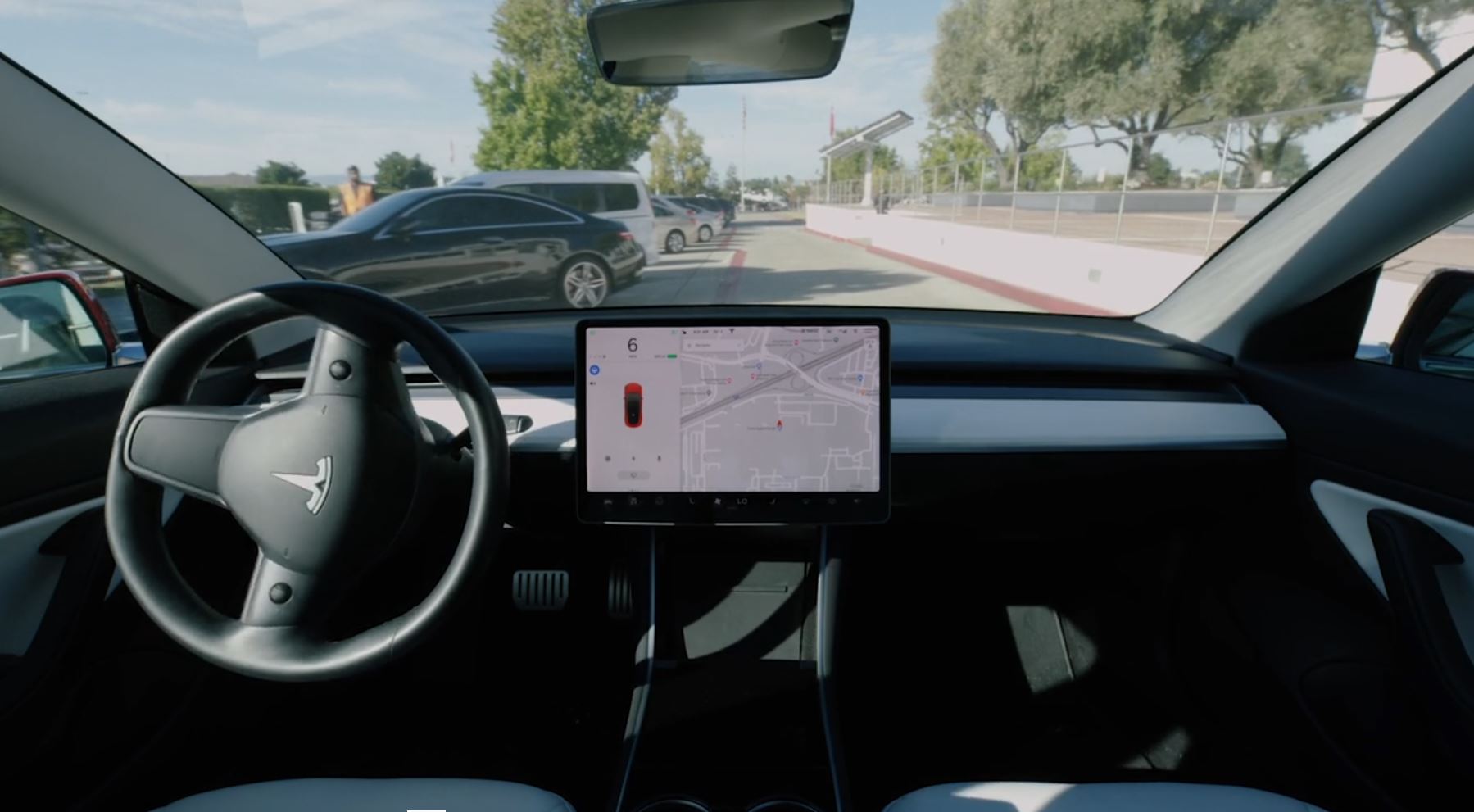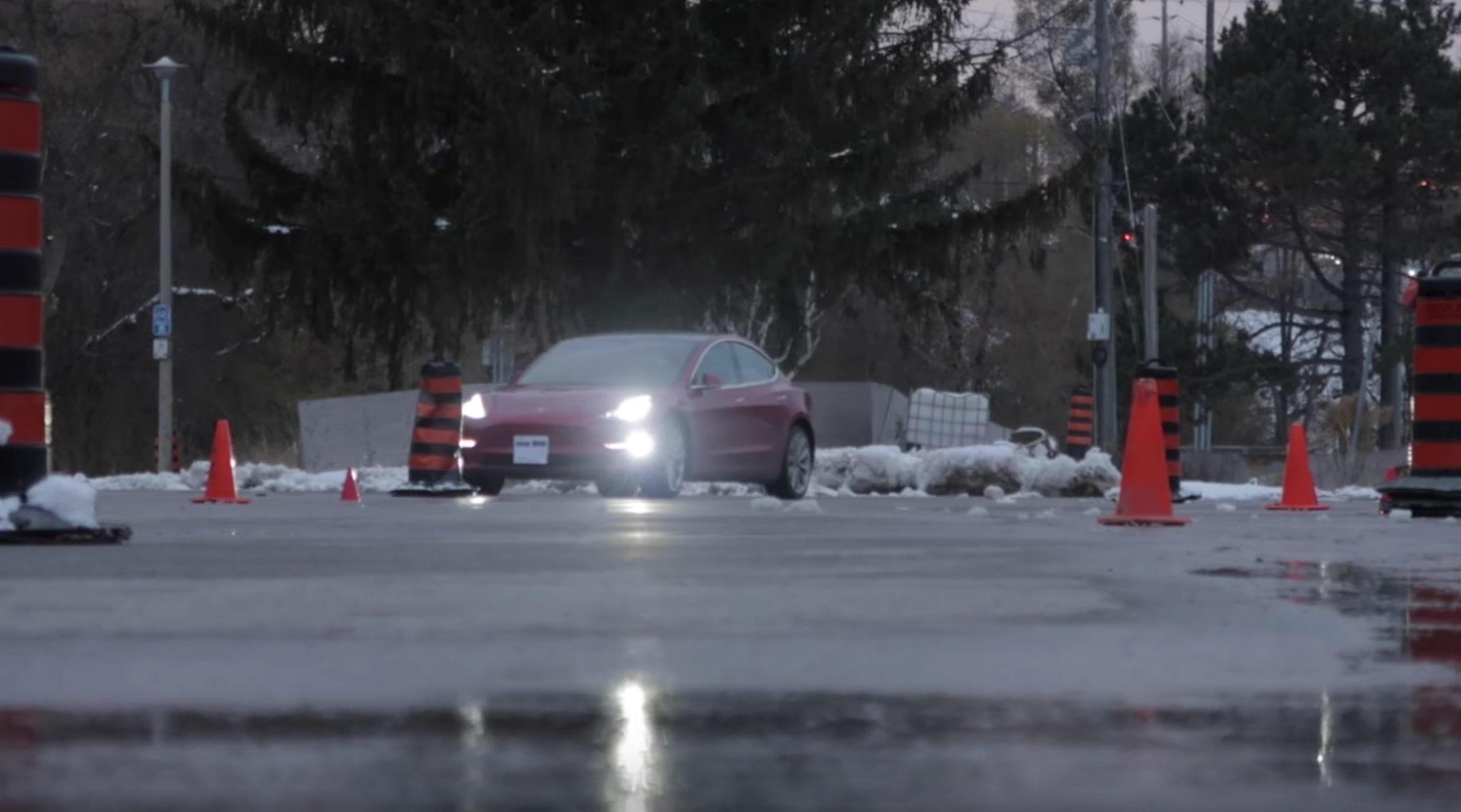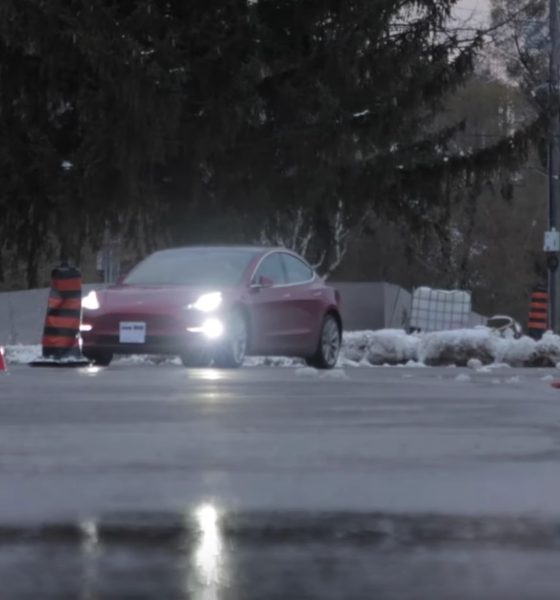Tesla recently released Smart Summon in China on Monday. With the feature, users can now have their vehicles pick them up at designated locations in parking lots. Tesla enthusiast @Tesla_Mania shared the news about the Smart Summon China release in a post about the company’s 2019.40.50 update.
The rollout of Smart Summon in China, aside from providing a new convenience feature for local customers, is also a good way for the U.S. electric car maker to collect more data and improve the feature. This is particularly important in China, since the country is expecting an influx of Teslas next year with the imminent deliveries of the Made-In-China Model 3.
Tesla initially released Smart Summon in September together with its V10 software update. While the feature’s initial iterations left much to be desired, improvements rolled out by Tesla through its over-the-air updates have made Smart Summon smoother and more reliable over the past few months.
Based on Tesla’s V10 Release Notes last September, Smart Summon is available for those who purchased Full-Self Driving or the Enhanced Autopilot. The feature allows the car to navigate a parking lot and go to its owner or a destination of choice. This is done without any driver controlling the vehicle from inside the car.
” t’s the perfect feature to use if you have an overflowing shopping cart, are dealing with a fussy child, or simply don’t want to walk to your car through the rain. Customers who have had early access to Smart Summon have told us that it adds both convenience to their trips and provides them with a unique moment of delight when their car picks them up to begin their journey. Those using Smart Summon must remain responsible for the car and monitor it and its surroundings at all times,” the Tesla release notes read.
Tesla CEO Elon Musk earlier last week hinted at the imminent release of the company’s holiday software update that includes the much-awaited sneak preview of the FSD. The update is expected to roll out a “feature-complete” version of Full Self-Driving to an initial batch of its early access program, but so far, no reports have been shared about such a release so far.

Ultimately, the autonomous driving capabilities of Teslas will help fulfill its goal of having a fleet of self-driving Robotaxis. If that plan materializes in the near future, one can only expect the value of the company and its vehicles to go up dramatically and as Musk explained before, “a fully autonomous car that can function as a Robotaxi is several times more valuable than a non-autonomous car.” For a car to function well without driver input, it must be able to master dropping off and pickup up passengers from parking lots.
In the meantime, Tesla continues to perfect its Smart Summon. Just last week, an electric vehicle enthusiast demonstrated how Tesla has been improving the Smart Summon feature. Kevin Rooke tested if the vehicle can recognize moving objects such as a makeshift shopping cart in the experiment. Rooke proved impressed with how his Model 3 passed the tests, even carrying out more challenging tests such as rolling basketballs on the vehicle’s path.
Recently, another Tesla owner tested the Smart Summon capability of his Tesla. YouTuber Daniel Spalding used the Come To Me feature of the vehicle on a snow-covered parking lot. This was another challenging experiment aced by Tesla’s Smart Summon given the poor visibility in the area and the absence of road lines because of the weather condition. Much to the Tesla onwer’s pleasant surprise, Smart Summon was up to the task.

News
Tesla FSD fleet is nearing 7 billion total miles, including 2.5 billion city miles
As can be seen on Tesla’s official FSD webpage, vehicles equipped with the system have now navigated over 6.99 billion miles.

Tesla’s Full Self-Driving (Supervised) fleet is closing in on almost 7 billion total miles driven, as per data posted by the company on its official FSD webpage.
These figures hint at the massive scale of data fueling Tesla’s rapid FSD improvements, which have been quite notable as of late.
FSD mileage milestones
As can be seen on Tesla’s official FSD webpage, vehicles equipped with the system have now navigated over 6.99 billion miles. Tesla owner and avid FSD tester Whole Mars Catalog also shared a screenshot indicating that from the nearly 7 billion miles traveled by the FSD fleet, more than 2.5 billion miles were driven inside cities.
City miles are particularly valuable for complex urban scenarios like unprotected turns, pedestrian interactions, and traffic lights. This is also the difference-maker for FSD, as only complex solutions, such as Waymo’s self-driving taxis, operate similarly on inner-city streets. And even then, incidents such as the San Francisco blackouts have proven challenging for sensor-rich vehicles like Waymos.
Tesla’s data edge
Tesla has a number of advantages in the autonomous vehicle sector, one of which is the size of its fleet and the number of vehicles training FSD on real-world roads. Tesla’s nearly 7 billion FSD miles then allow the company to roll out updates that make its vehicles behave like they are being driven by experienced drivers, even if they are operating on their own.
So notable are Tesla’s improvements to FSD that NVIDIA Director of Robotics Jim Fan, after experiencing FSD v14, noted that the system is the first AI that passes what he described as a “Physical Turing Test.”
“Despite knowing exactly how robot learning works, I still find it magical watching the steering wheel turn by itself. First it feels surreal, next it becomes routine. Then, like the smartphone, taking it away actively hurts. This is how humanity gets rewired and glued to god-like technologies,” Fan wrote in a post on X.
News
Tesla starts showing how FSD will change lives in Europe
Local officials tested the system on narrow country roads and were impressed by FSD’s smooth, human-like driving, with some calling the service a game-changer for everyday life in areas that are far from urban centers.

Tesla has launched Europe’s first public shuttle service using Full Self-Driving (Supervised) in the rural Eifelkreis Bitburg-Prüm region of Germany, demonstrating how the technology can restore independence and mobility for people who struggle with limited transport options.
Local officials tested the system on narrow country roads and were impressed by FSD’s smooth, human-like driving, with some calling the service a game-changer for everyday life in areas that are far from urban centers.
Officials see real impact on rural residents
Arzfeld Mayor Johannes Kuhl and District Administrator Andreas Kruppert personally tested the Tesla shuttle service. This allowed them to see just how well FSD navigated winding lanes and rural roads confidently. Kruppert said, “Autonomous driving sounds like science fiction to many, but we simply see here that it works totally well in rural regions too.” Kuhl, for his part, also noted that FSD “feels like a very experienced driver.”
The pilot complements the area’s “Citizen Bus” program, which provides on-demand rides for elderly residents who can no longer drive themselves. Tesla Europe shared a video of a demonstration of the service, highlighting how FSD gives people their freedom back, even in places where public transport is not as prevalent.
What the Ministry for Economic Affairs and Transport says
Rhineland-Palatinate’s Minister Daniela Schmitt supported the project, praising the collaboration that made this “first of its kind in Europe” possible. As per the ministry, the rural rollout for the service shows FSD’s potential beyond major cities, and it delivers tangible benefits like grocery runs, doctor visits, and social connections for isolated residents.
“Reliable and flexible mobility is especially vital in rural areas. With the launch of a shuttle service using self-driving vehicles (FSD supervised) by Tesla in the Eifelkreis Bitburg-Prüm, an innovative pilot project is now getting underway that complements local community bus services. It is the first project of its kind in Europe.
“The result is a real gain for rural mobility: greater accessibility, more flexibility and tangible benefits for everyday life. A strong signal for innovation, cooperation and future-oriented mobility beyond urban centers,” the ministry wrote in a LinkedIn post.
News
Tesla China quietly posts Robotaxi-related job listing
Tesla China is currently seeking a Low Voltage Electrical Engineer to work on circuit board design for the company’s autonomous vehicles.

Tesla has posted a new job listing in Shanghai explicitly tied to its Robotaxi program, fueling speculation that the company is preparing to launch its dedicated autonomous ride-hailing service in China.
As noted in the listing, Tesla China is currently seeking a Low Voltage Electrical Engineer to work on circuit board design for the company’s autonomous vehicles.
Robotaxi-specific role
The listing, which was shared on social media platform X by industry watcher @tslaming, suggested that Tesla China is looking to fill the role urgently. The job listing itself specifically mentions that the person hired for the role will be working on the Low Voltage Hardware team, which would design the circuit boards that would serve as the nervous system of the Robotaxi.
Key tasks for the role, as indicated in the job listing, include collaboration with PCB layout, firmware, mechanical, program management, and validation teams, among other responsibilities. The role is based in Shanghai.
China Robotaxi launch
China represents a massive potential market for robotaxis, with its dense urban centers and supportive policies in select cities. Tesla has limited permission to roll out FSD in the country, though despite this, its vehicles have been hailed as among the best in the market when it comes to autonomous features. So far, at least, it appears that China supports Tesla’s FSD and Robotaxi rollout.
This was hinted at in November, when Tesla brought the Cybercab to the 8th China International Import Expo (CIIE) in Shanghai, marking the first time that the autonomous two-seater was brought to the Asia-Pacific region. The vehicle, despite not having a release date in China, received a significant amount of interest among the event’s attendees.










